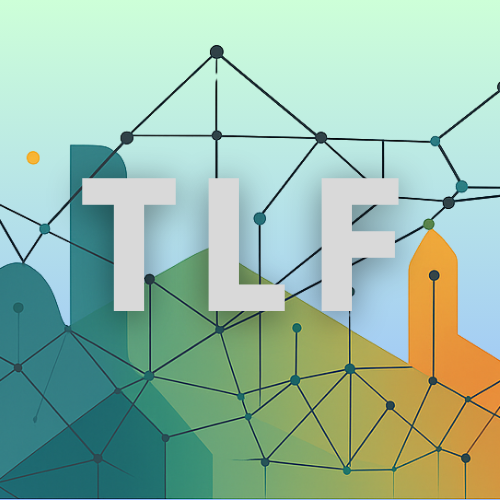
The Hidden Leaders Running Your Organization
You're looking at the wrong org chart. The real power in your company isn't in the corner office - it's with the person everyone turns to for the real story. The one who can kill your best initiative with a shrug or make it fly with their enthusiasm.
What You'll Discover:
🔍 Google's Project Aristotle: Why psychological safety (created by informal leaders) beats everything else
📊 The 30% problem: Why most transformations fail (hint: it's not what you think)
🎯 Three magic questions to find your real influence network
⚡ Nokia vs Virginia Mason: What happens when you ignore vs embrace hidden leaders
In the last video I showed you the evidence - trust beats control, every time. But here’s what nobody tells you about building trust and driving change:
You’re looking at the wrong org chart.
The real power in your company? It’s not in the corner office. It’s with the person everyone turns to when they need the real story. The one who can kill your best initiative with a shrug or make it fly with their enthusiasm.
Today, I’m revealing the invisible force that actually determines whether your organization succeeds or fails. And once you see this hidden network, you’ll understand why most change efforts are doomed before they even start.
[TITLE CARD: The Hidden Leaders Running Your Organization]
Remember the Military Lesson?
Last time I mentioned how smart military officers know the sergeant really runs the unit. Well, that’s not just a military thing - it’s a universal truth about human organizations.
Picture this: You’re a colonel. Formal authority, years of training, strategic responsibility. But without the company sergeant on your side? You’re just someone with fancy insignia talking to yourself.
Why? Because the sergeant has what you don’t - trust from the troops. They have influence without needing authority. They can translate your brilliant strategy into action… or ensure it dies a quiet death.
This is happening in your organization RIGHT NOW.
Google’s Accidental Discovery
So Google - being Google - decided to crack the code on team effectiveness. Project Aristotle: 180 teams, mountains of data. They expected to find some secret formula about team composition or processes.
What they found instead came quite unexpected:
The number one predictor of team success? Psychological safety. But here’s what might surprise you - it wasn’t created by the managers. It was created by informal leaders. Regular people who somehow made it okay to speak up, to take risks, to say “I don’t know.”
Amy Edmondson at Harvard found the same thing in hospitals. Teams with psychological safety reported MORE errors - which sounds bad until you realize they were catching and fixing problems faster!
All because someone - maybe without any formal authority - made it safe to say those magic words: “I think we might have a problem.”
Your Middle Managers: The Secret Sauce For Change
Here’s a statistic that should wake up every CEO: Only 30% of organizational transformations succeed. Want to know the difference between success and failure?
Middle management engagement. But not the way you think.
McKinsey found that successful transformations happen when middle managers become change champions. They’re the “hub through which strategic information flows.” They translate vision into reality.
But here’s the plot twist - the middle managers who REALLY drive change? Often they’re not the ones with the official “manager” title. They’re the informal leaders that other middle managers trust.
Starting to see the pattern?
Finding Your Real Influence Network
Want to find these hidden leaders? Here are three questions that work like a leadership-detector:
- “Who would others turn to for advice?”
- “Who has influence beyond their formal role?”
- “Whose opinion carries weight in break room conversations?”
I read about an energy company where management was SURE they knew who the influential people were.
They did a network analysis and discovered the real influencer was “Cole,” a mid-level employee relatively far down in the formal company structure. Meanwhile, his formal boss-a senior VP who everyone assumed was the key connector-was actually connected to only 2 people in the informal network.
The revelation was stark: Without Cole, the entire production group would be cut off from the rest of the organization. This single informal leader was holding together operational communication that formal structures had completely failed to create.
The smart move? They started involving Cole in strategic planning sessions. Gave him direct access to senior leadership. Made him part of the solution instead of an invisible bottleneck.
I’m sure you know somebody like Cole in your company, too, right? I certainly know a few in mine.
The University of Maryland Study: Supervisor vs. Peer Influence
Researchers studied a food processing company, comparing supervisor-led changes with peer-influenced changes.
The changes led by Supervisors? Immediate compliance… that lasted exactly as long as the supervisor was watching.
The changes influenced by Peers? They STUCK.
The conclusion: “For sustained change in behaviors, you need employees to encourage each other.”
Think about that. All your top-down initiatives, all your change management consultants - temporary at best. Unless you get these informal leaders on board, you’re just rearranging deck chairs.
Why People Don’t Speak Up
Let me paint you a picture that happens every day: Someone hears a machine making weird noises. They KNOW something’s wrong. But stopping the line means explaining to three levels of management why they “cost” the company production time.
So they stay quiet. Machine breaks. Costs 10x more to fix.
This is organizational insanity!
But here’s the thing - it’s not about the formal reporting structure. It’s about social dynamics. People don’t speak up because it’s socially risky.
Unless… unless there’s an informal leader who’s done it before and thrived. Who signals “this is valued here.”
One person with social credibility can change everything.
Learning from Nokia’s Hidden Warning Signs
Want to see what happens when you ignore these dynamics? Nokia’s middle managers knew their software couldn’t compete with iPhone. But they experienced “fear of losing social status” and let leadership believe impossible deadlines would be met.
The information existed. The formal channels existed. But the social dynamics killed the truth.
Result? Nokia lost everything.
But flip it around - what if Nokia had informal leaders who made it safe to deliver bad news? What if speaking truth was socially rewarded instead of punished?
Virginia Mason’s Brilliant Approach
Now for hope! Virginia Mason Medical Center understood this perfectly. When implementing Toyota Production System principles, they didn’t mandate from the top.
They started with the radiology department - specifically with technicians and nurses who had informal influence. These weren’t the department heads. They were the people who others saw as “one of us.”
These informal leaders helped design new workflows. They created a Patient Safety Alert system that ANY employee could trigger without fear.
Results?
- Same-day access for Radiology procedures
- Nurse walking distance reduced from 10,000 steps down to twelve hundred per day.
- Time for Direct patient care increased from 35% to 90%!
Because they worked WITH the hidden power structure, not against it.
The Right Way to Work With Informal Leaders
Now here’s where many organizations mess up - they identify informal leaders and immediately try to promote them or make them official.
Don’t do that!
Informal leaders have influence precisely BECAUSE they’re “one of us.” The moment you make them management, they lose the trust that made them powerful.
Instead:
- Involve them early - During planning, not after
- Share information with them freely - Give them all the context they need to make informed decisions about how to support you
- Let them keep their independence - They need to be able to push back
Think of them as your organizational immune system - they’ll attack bad ideas and protect good ones.
So Now What?
By now you’re probably thinking two things:
- “Oh wow, I can see these people in my organization!”
- “But what do I actually DO about it?”
That’s exactly where we’re going in the next video. Because knowing who your informal leaders are is just step one. The real magic happens when you create a systematic approach to working with them.
I’m going to give you a Monday morning action plan. Specific steps. Real examples. A roadmap that actually works.
But here’s your homework for this week: Start watching for these hidden leaders. Don’t do anything yet - just observe. Who do people really listen to? Who sets the social tone? Who could make or break your next initiative?
The Power of Seeing Clearly
In most successful transformations I’ve seen - and the research backs this - informal leaders play a pivotal role. Every transformation that succeeded had them on board. Every one that failed tried to work around them.
The beautiful thing? These leaders are already in your organization. They’re already influencing outcomes. The only question is: are you going to work with them or waste their potential?
Once you see this hidden network, you can’t unsee it. And once you learn to work with it instead of against it, change stops being a battle and starts becoming a dance.
Next time: Your practical playbook for making change happen. Real steps, real timelines, real results.
This is The Liberty Framework. Let’s work with human nature, not against it.
See you next time!
